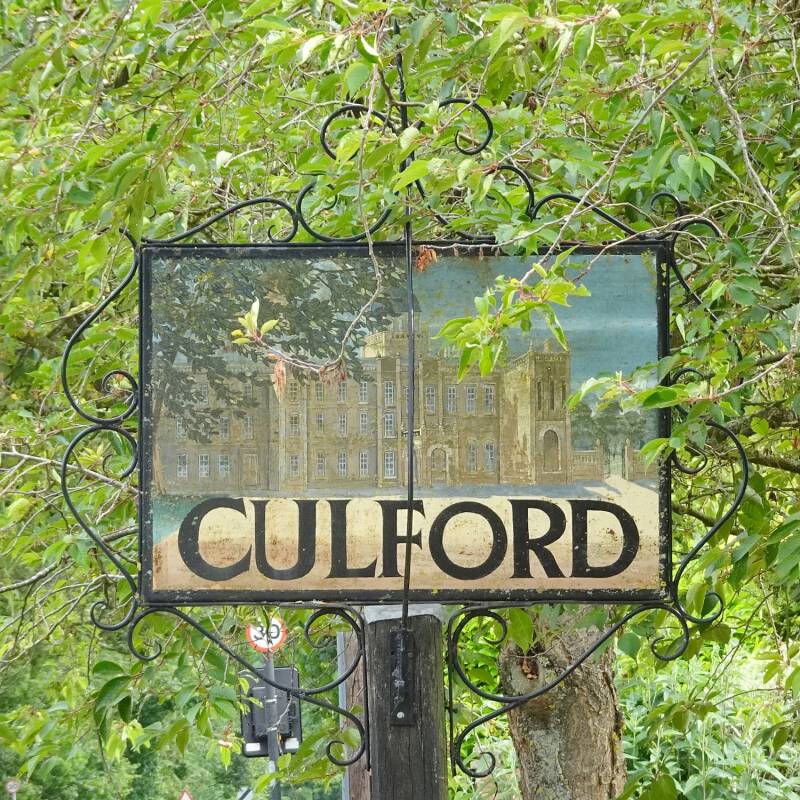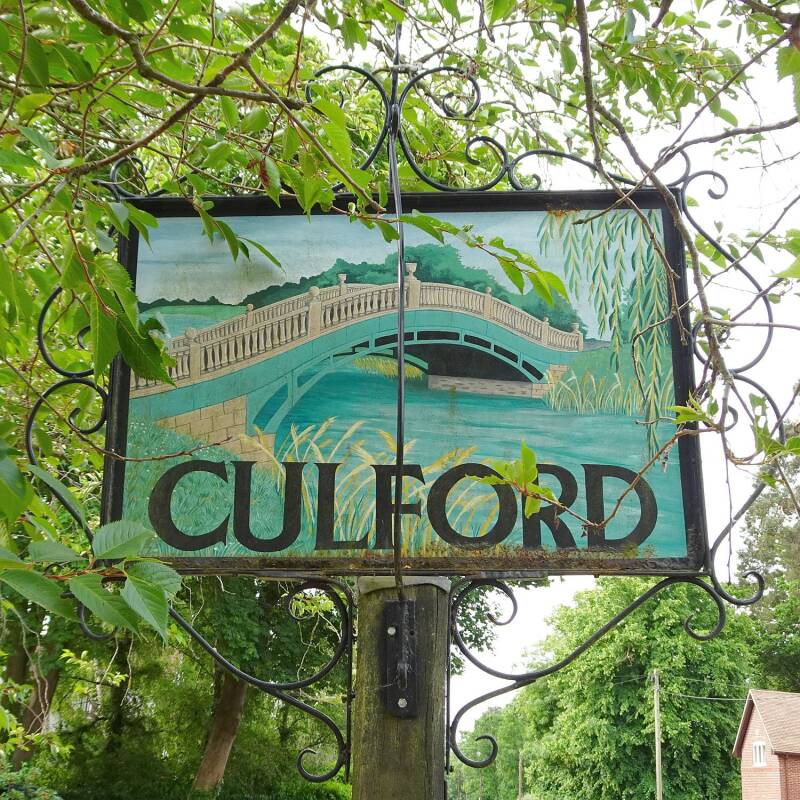Culford
The Sign
A double sided sign with Culford Hall on one side and The Iron Bridge on the other. Culford Hall was built by Sir Nicholas Bacon in 1591 and in 1660 the estate passed through marriage to the Cornwallis family. The hall which was rebuilt in 1796 for the Cornwallis family and is central to the Culford Estate. It is now The Culford School after being sold by the 7th Earl Cadogan in 1935. The Iron Bridge spans the estate’s lake, west of the hall. It was constructed in 1804, designed by Samuel Wyatt and is and is made of five tubular cast-iron sections repeated six times form the 60ft span, supported on channelled granite abutments. It is the largest of the eight surviving cast iron bridges built between 1790 - 1810. The sign was given to the village in 1977 by Culford & West Stow Women's Institute and was refurbished in 1994 to commemorate the centenary of Parish Councils.
The Name and Population
It was called Culeford, Coleford around 1040 and Culeforda in the Domesday Book. It probably means "The ford of a man called Cula", from Old English. The population was 578 at the 2011 census.
Other Points of Interest
A tributary of the River Lark, known as Culford Stream, flows through the centre of the village being fed from Ampton Water in Great Livermere.
In April and May 1291 King Edward I stayed at the manor in Culford during his visit to Bury St Edmunds Abbey where he agreed that royal justices would not in future sit within the Liberty of St Edmund.

